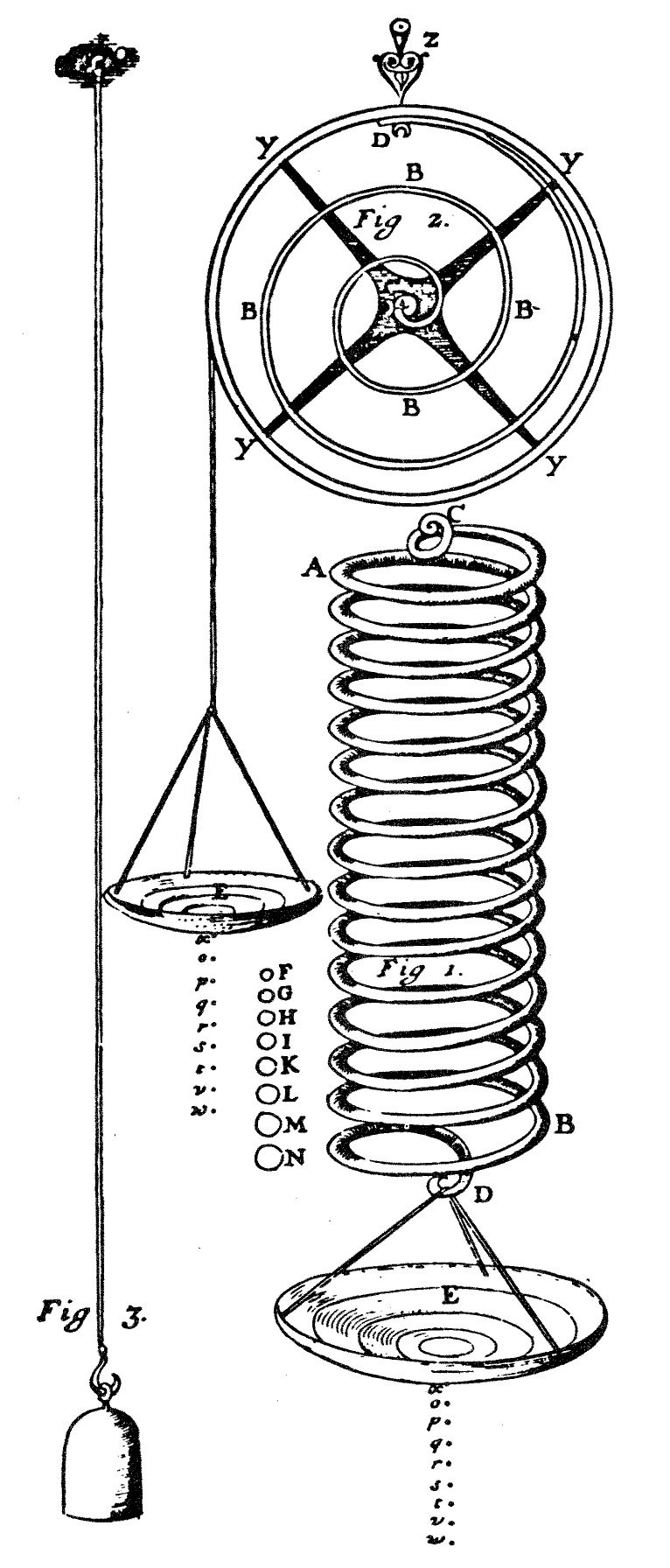





Welcome to the Robert Hooke Society, Freshwater








Balance-Spring Watch ‘the power of a spring is proportional to its extension’
It was the Dutch scientist, Christian Huyghens, who made the first pendulum clock in 1657. Hooke wanted to improve the accuracy and reliability of such clocks so that they could be used to help navigation at sea. Before 1660 he had applied a spiral spring to the balance wheel of a clock so that the spring's natural oscillation would serve as a regulator of the mechanism, and had improved the anchor escapement. He demonstrated a spring-regulated watch to Lord Brouncker and others but, although advised to patent the invention, declined to do so. During the 1670s Hooke collaborated with Thomas Tompion, the father of English watchmaking.
In the course of this work, he made the discovery for which he is most well-known today and which many of us may remember from our school-days, Hooke’s Law of Springs. He stated this as ‘the power of a spring is proportional to its extension’, by which he meant that a spring is stretched in proportion to the force or weight pulling it.